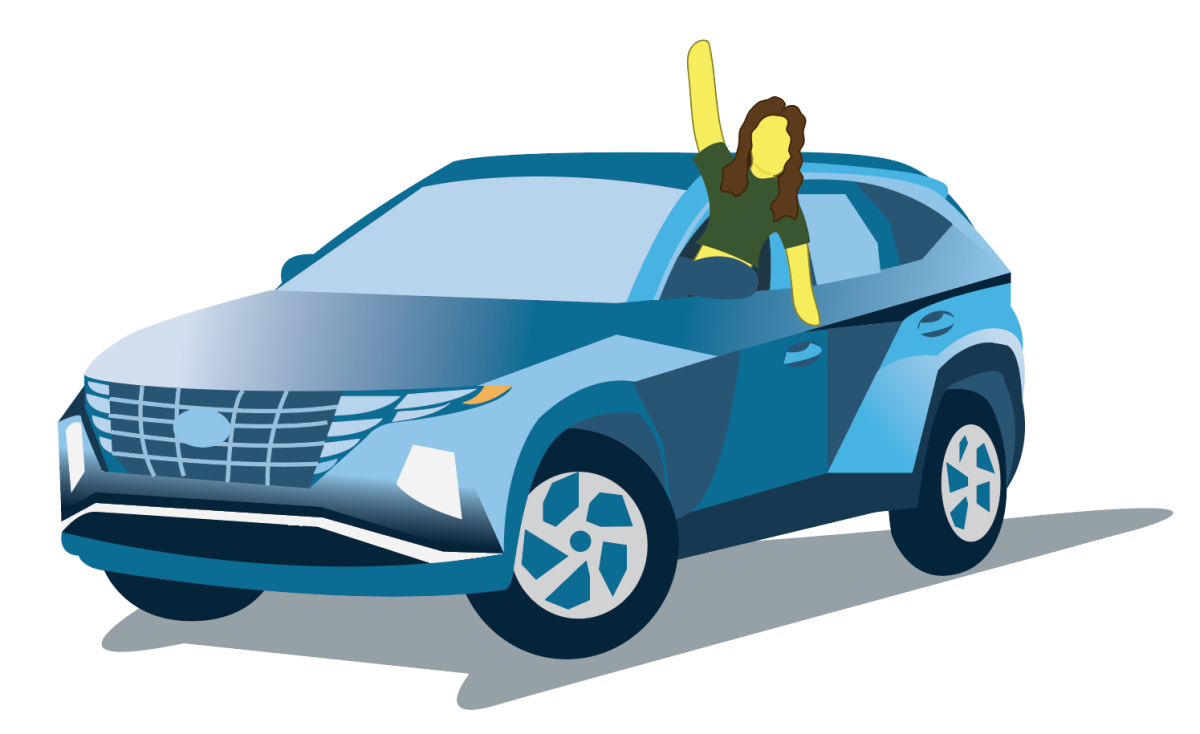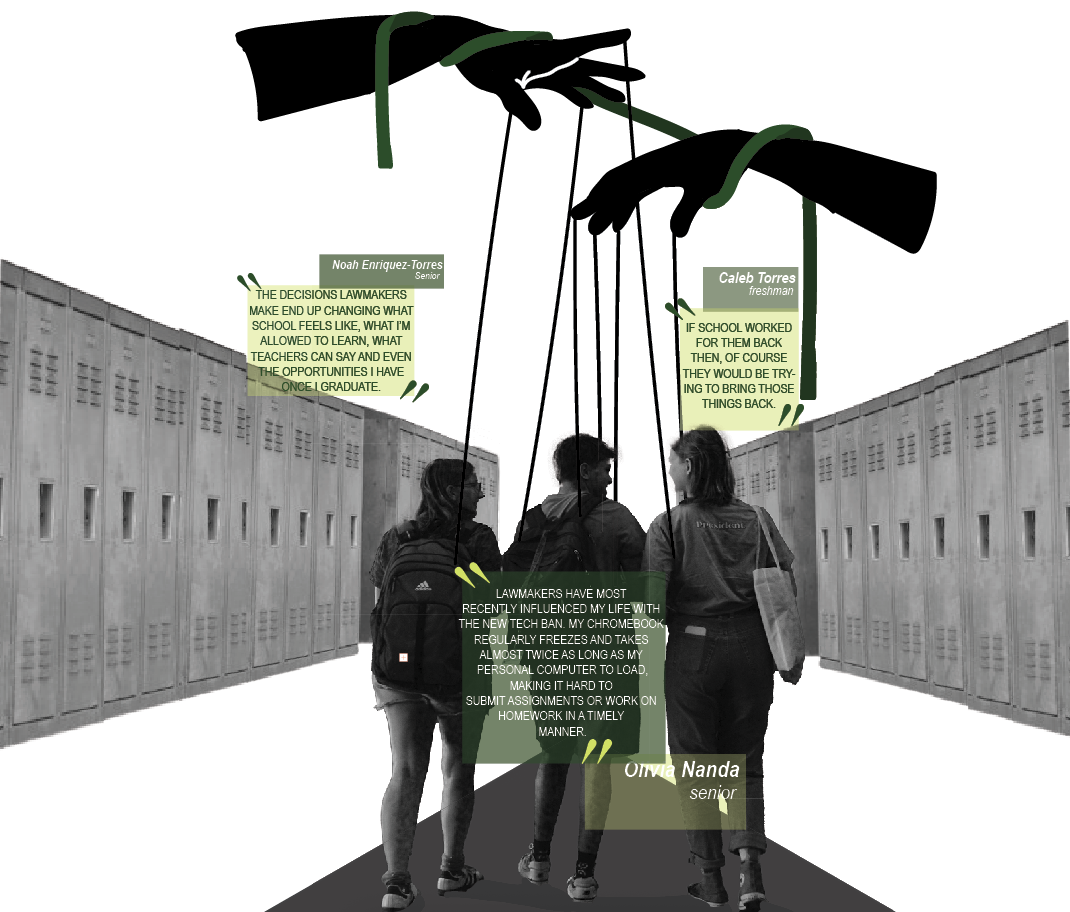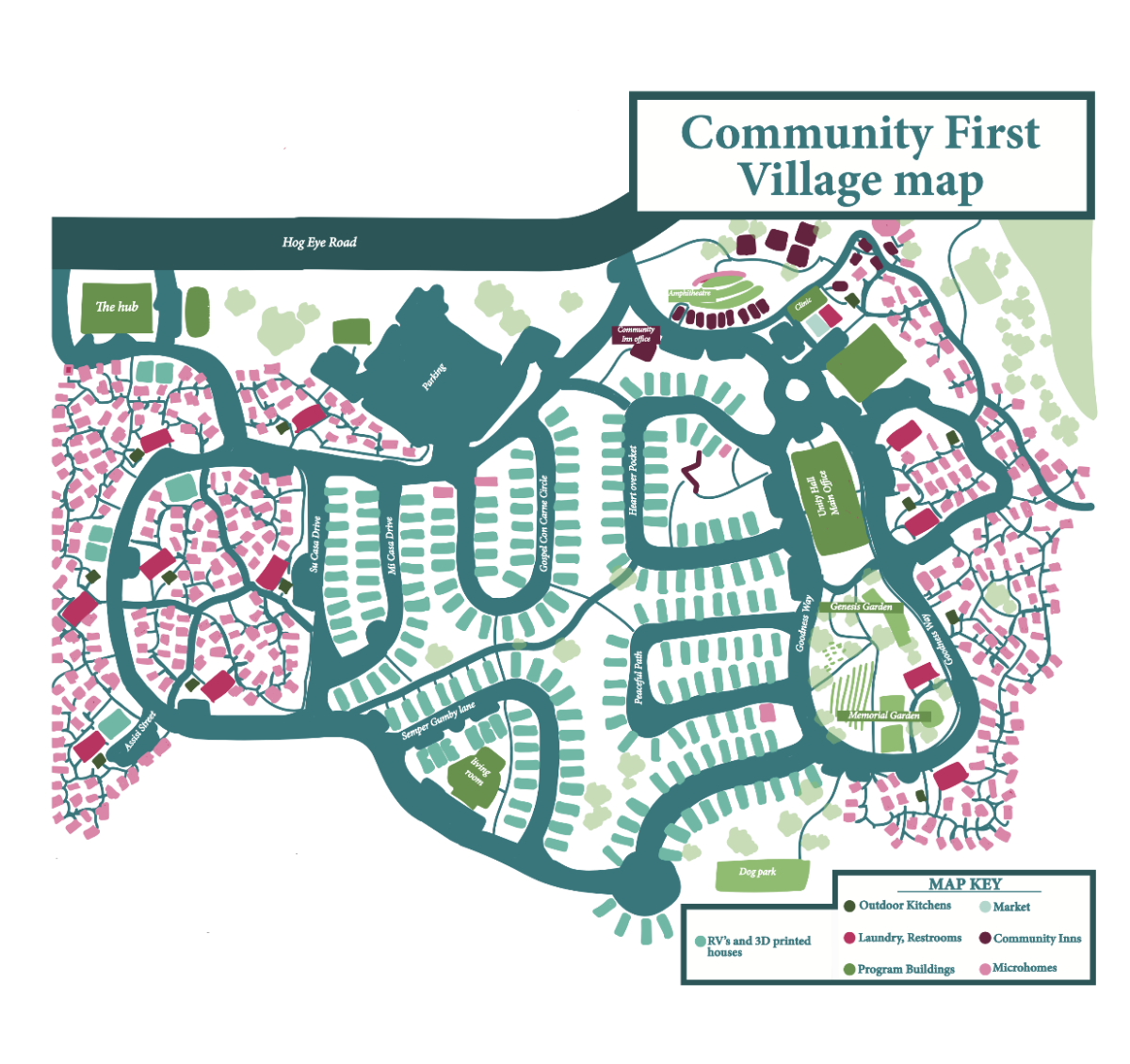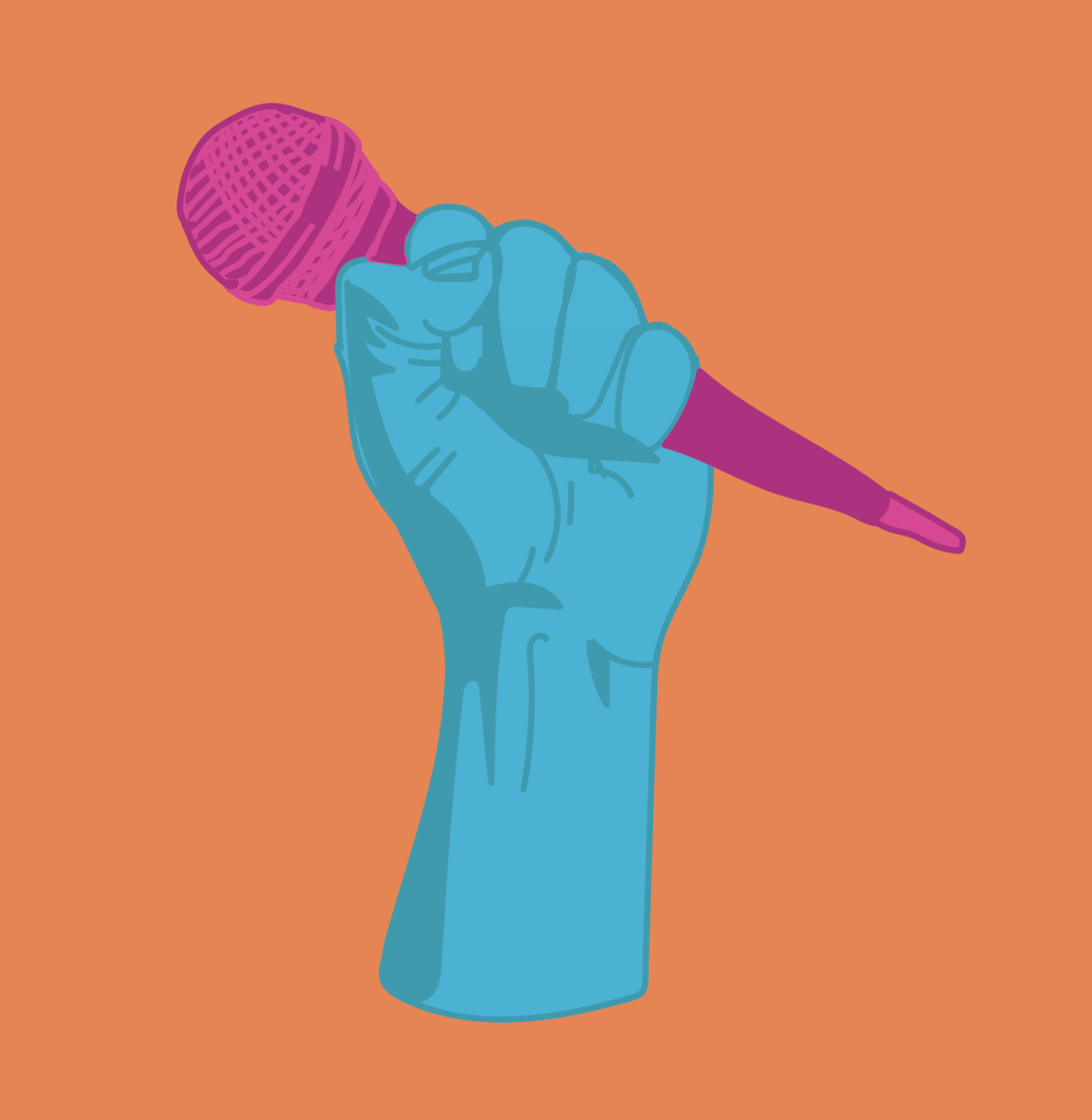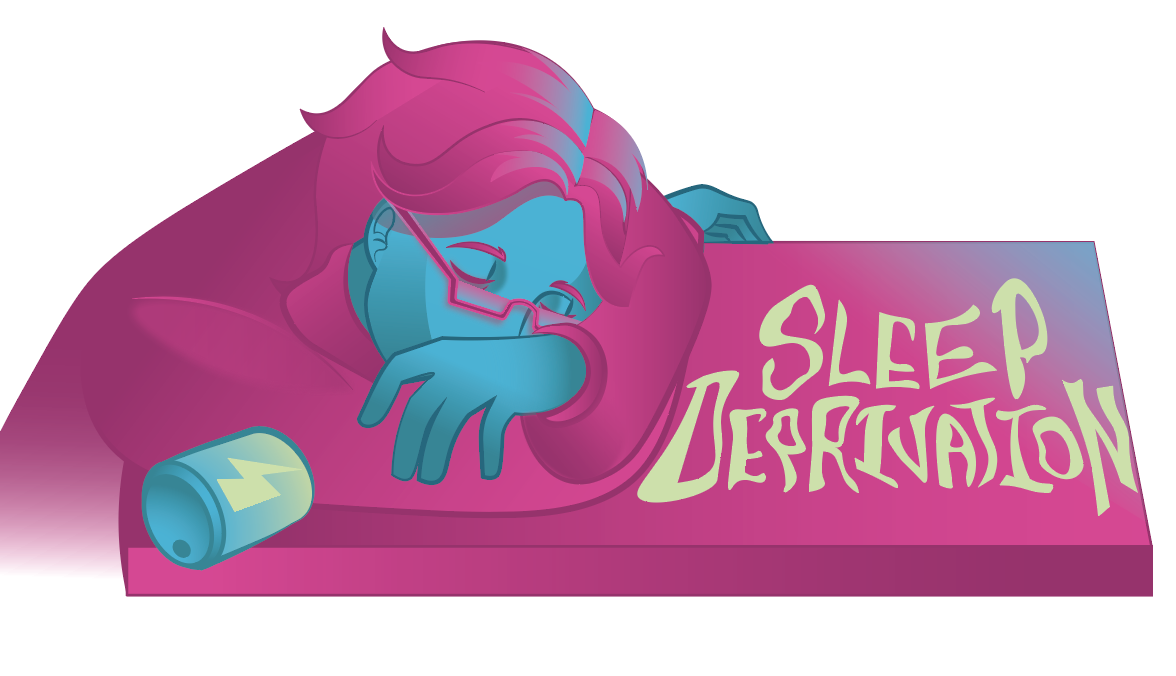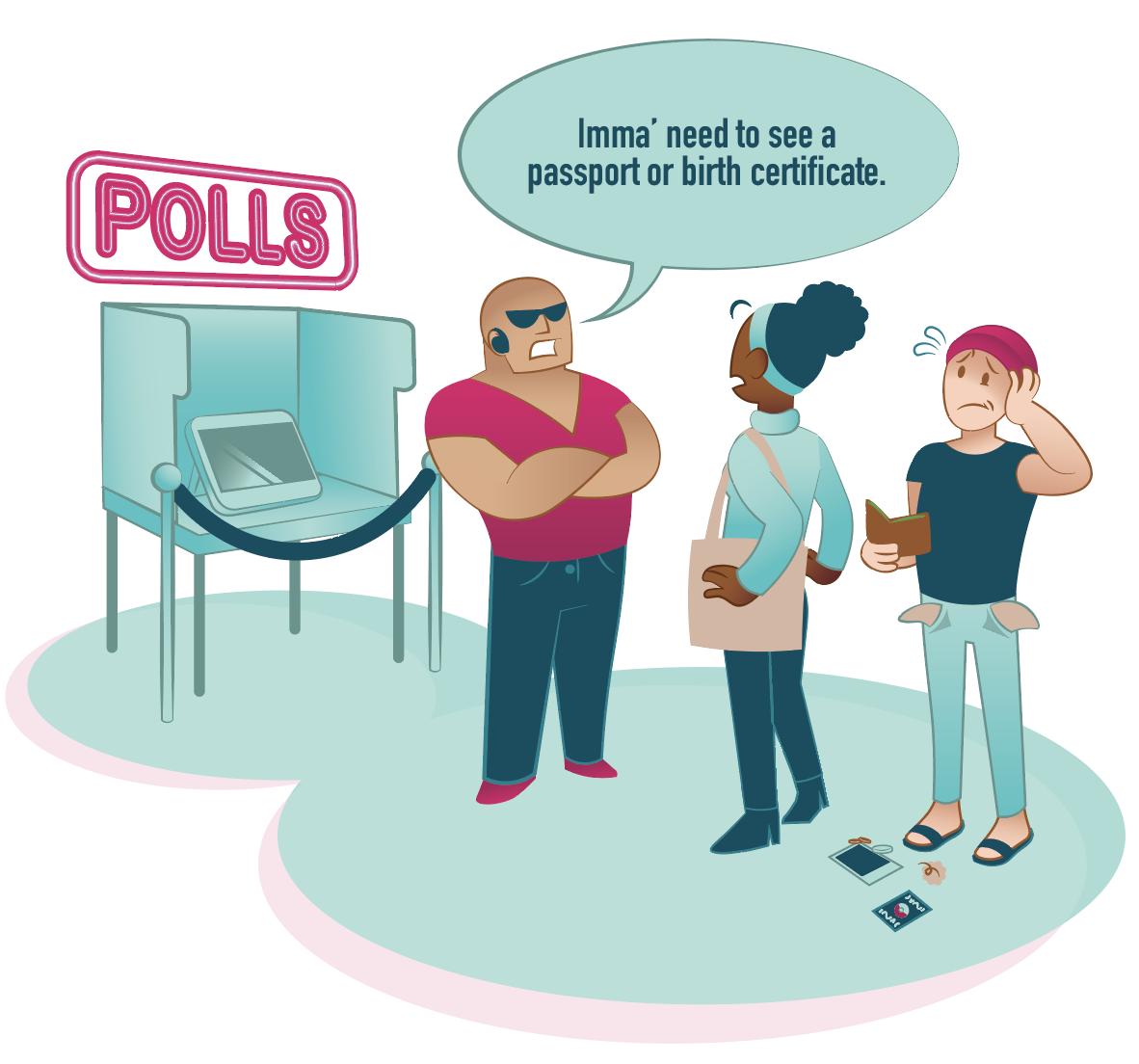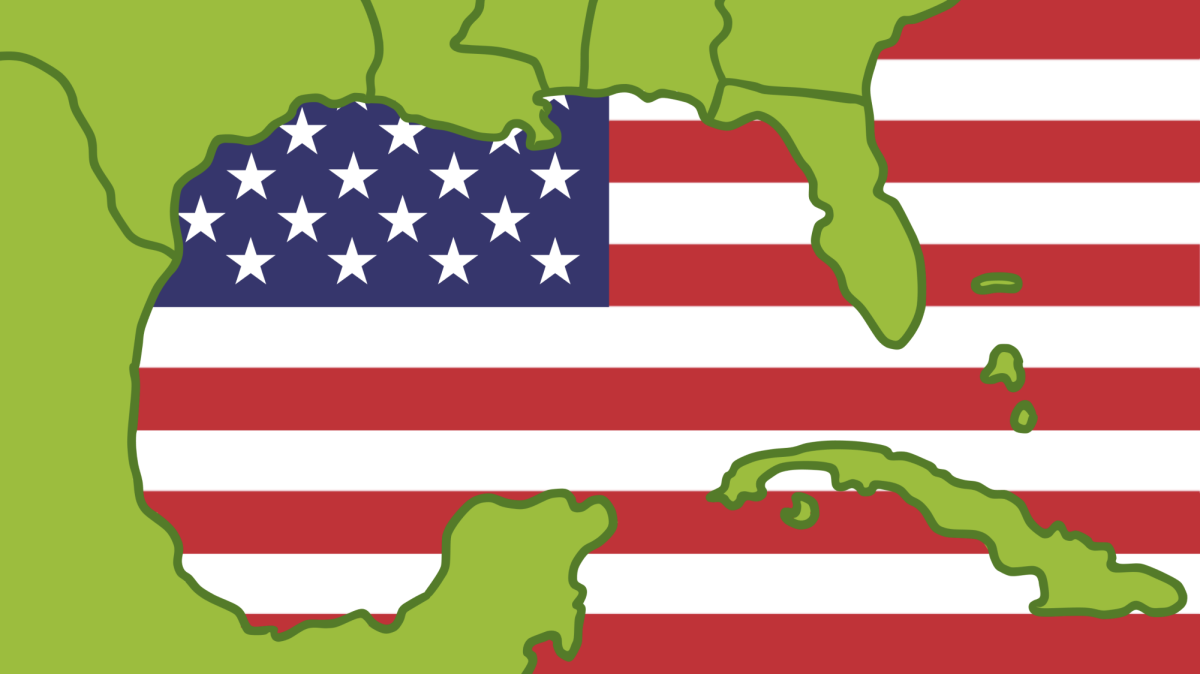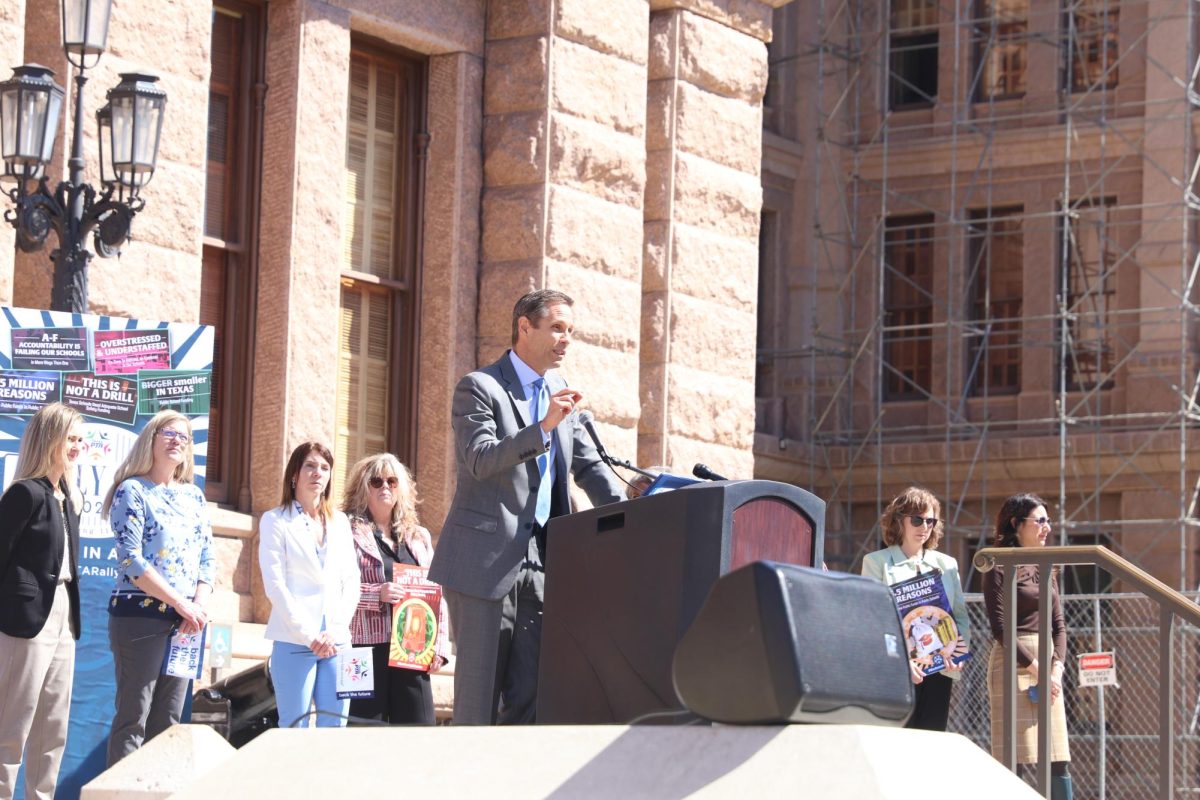Around the world, voting is used as a tool by governments to make important decisions. The American voting system was developed by the founding fathers in the 18th century and allowed the U.S. public to elect the first ever president of the United States, George Washington. Since then there have been many changes to the American election process, and technology has had a major influence on how citizens learn about candidates, interact with them, and even cast their votes for them.
“The election process is a little bit confusing, because there’s a lot of different things going on,” senior voter Natalia Portilla said. “However ultimately, I think it’s fun and exciting to see the different sides of the election and the ideas that each side is trying to push forward to get people to vote for them.”
CAMPAIGNING AND DEBATING
To be president, one must be at least 35 years old, a natural born U.S. citizen, and have lived in America for 14 years. As long as someone meets those requirements they can register to run for president with the Federal Election Commission. According to a poll of 397 Bowie students 30.2% of Bowie students believe that there should be more requirements in order to be president, and 15.6% believe there should be less requirements.
“It’s up to the people to determine whether or not a candidate is qualified to be president, and if we put too many qualifications or restrictions on the office, then it’s not a true decision for the people,” AP U.S. History and Government teacher Dalton Pool said. “I wish that we as Americans had higher standards for the office, or maybe understood the office better to better judge who’s qualified for it, but I think that’s on our education system, the media, and on US citizens themselves.”
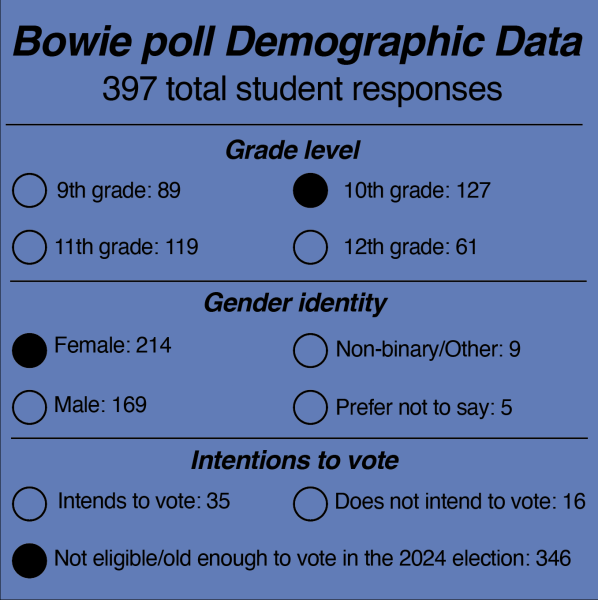
Once registered, politicians campaign gathering attention and spreading information about their political values and plans. Candidates will often craft campaign slogans to emphasize what values they bring to the American people, one popular example being “Make America Great Again” which was popularized by Ronald Reagan in his 1980 campaign, and then brought back to popularity by Donald Trump when he used in his 2016 campaign.
“A lot of political campaigns are kind of fictionalized in a sense, and really over dramatic in terms of drawing voters’ eyes,” senior voter Barrington Young said. “If someone really reads into the campaigns, and looks at past presidencies and the policies candidates make, that’s a better representation of how the actual candidates will run in office. I’m not a big fan of sitting and watching the debates and seeing absolutely everything candidates post online, or on social media. It’s fictionalized, and it puts America in a bad spotlight.”
Candidates often try to receive the backing of some sort of political party whether a majorly known party such as the Democratic or Republican party, or lesser known parties such as the Libertarian or Green parties. According to the Bowie poll, 62% of students would vote based on the political party if they don’t know much about a candidate.
“If you don’t have a major party backing you, you basically have no chance of winning,” Pool said. “Today, the two major parties are Democrat and Republican, and both of those parties have developed a primary system where each state has their say in who the eventual nominee for president should be. This presidential cycle is a little different, because Biden was presumed to be the Democratic nominee, and Trump has such a firm grip on the Republican Party that he easily won the Republican primary. The wrench that was thrown in there was, of course, Biden dropping out of the race due to health concerns, polling concerns and his bad performance in the debate.”
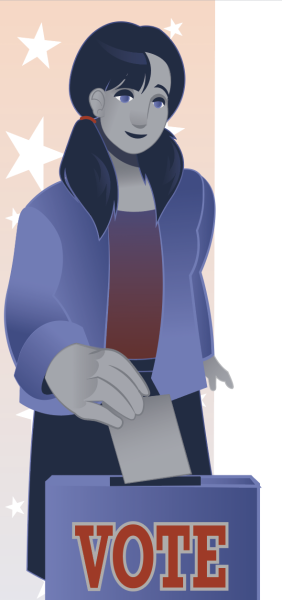
On June 27, Donald Trump and Joe Biden participated in the first presidential debate of this campaign cycle. Following the debate polls by 538 and Ipsos Showed that 60.1% of viewers believed Trump won the debate. Later Biden dropped out of the race and endorsed Kamala Harris, who had her first debate with Trump on September 10. Following this debate CNN polls showed that 63% of viewers believed Harris did a better job in the debates.
“I don’t watch debates anymore because I get so frustrated watching them,” Pool said. “Very little is said that isn’t already known or people haven’t heard from sound bites of the rallies, and a lot of times the candidates are just trying to get one little clip or sound bite that can then be put onto social media. Very little policy or substance is actually discussed, and that’s on the candidates mostly. Additionally it’s hard to fact check live.”
In past years there have been more debates allowing candidates ample opportunity to defend their ideas for the future of America, however Trump has declined to participate in further debates with Harris. Outside of the debates, candidates hold rallies and create online platforms to keep voters informed. Both Trump and Harris have a website where they bring in donations, have information about their campaign plans, and sell merchandise. They also both have multi-platform social media accounts.
“I think politicians persuade people a lot by making big promises and proposing big changes on issues that they feel people are not happy with at the moment,” Portilla said. “They just promise a lot of things that they know that the people would want to see happen, and some of them follow through on that while others just say it so people could get on their side.”
The media’s coverage of presidential candidates throughout their campaign process can help citizens stay informed, and polling can allow citizens and candidates alike to see how the nation is leaning.
“Polls can drive important decisions for candidates as far as how they’re going to spend money and which states they’re going to campaign in,” Pool said. “Polling is also used by the media to let the people know how the candidates are doing and the direction the election is going. Polling was critical in Biden’s decision to drop out, because it was showing Biden trailing in all the key states and nationally.”
PRIMARIES AND CAUCUSES
Around six to nine months prior to the presidential elections, states hold primary elections to decide who each party’s nominees are going to be. The two ways that those elections could be held are primaries and caucuses. Primaries are typical voting with a ballot and a ballot box, while caucuses involve structured debate and may require people to stand on one side of a room or the other to show which candidate they support.
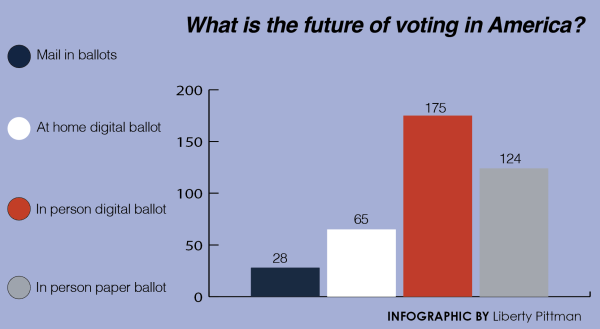
“Caucuses are very democratic, and they include a lot of debate,” Pool said. “It’s a cool process that can educate a lot of voters and can drive political participation, but it’s also a process that can really limit its audience to those that are most engaged and care the most about politics. There are a few states that still have caucuses, but most states just have a primary, which is basically identical to what election day looks like. Everyone votes in private and a ballot, and then all of the party tallies all the votes.”
According to CNN in the Texas primaries Biden was chosen as the Democratic nominee, winning 84.6% of votes, and Trump was chosen as the Republican nominee with 77.8% of votes. However primaries do not just determine the president, they determine all of the party nominees. After caucus and primary results are in, parties hold national conventions to announce who the nominees for the party are.
“The national conventions used to matter a lot more, because that’s where the decisions were made,” Pool said. “The parties come together to try to gain a lot of attention from the media, and get their message out. They’re also voting on important agenda items or platform decisions. All the states send their top party officials and delegates that have volunteered or worked within the party for a while to represent the state. It’s a party, It’s an event, and in some cases it’s an area where important decisions are made.”
BALLOTS AND VOTING
For every state the names and races that will appear on the ballot can be different, and can appear in a different order. Ballot access laws are different from state to state, but in Texas candidates wishing to appear on the ballot need to either collect a certain number of signatures or pay a fee. States are also in charge of ballot design, and deciding things such as whether or not ballots will be paper or digital.
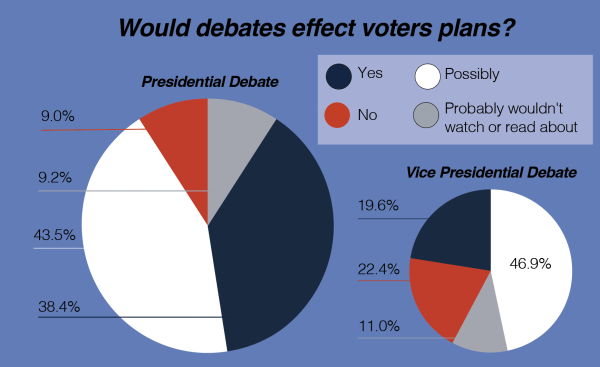 “The states get to decide how the ballot is organized, and this can be challenged in courts, and it often is,” Pool said. “In Texas, Republicans are in charge of our state legislature so Republicans will be listed first in every single race. It’s little things like that, that might affect the outcome. There’s not a lot of controversy as far as how ballots are built or designed at this point, especially since they’re not really paper anymore. Every time I voted, they’ve been very intuitive and self explanatory.”
“The states get to decide how the ballot is organized, and this can be challenged in courts, and it often is,” Pool said. “In Texas, Republicans are in charge of our state legislature so Republicans will be listed first in every single race. It’s little things like that, that might affect the outcome. There’s not a lot of controversy as far as how ballots are built or designed at this point, especially since they’re not really paper anymore. Every time I voted, they’ve been very intuitive and self explanatory.”
One of the most common ways people vote is in person, whether on election day or during an early voting period. For many Americans that means either filling in a ballot on paper or digitally. Many states, although allowing people to fill out their ballots digitally, will then print them out in order to have a paper record of the information for voters to review and then turn in. Mail-in ballots are another form of voting which was heavily utilized during the Covid-19 pandemic due to health concerns over in person voting.
“Election results are often contested these days even though our election integrity is super high, especially compared to other countries,” Pool said. “Certain political candidates have questioned results in the past, which has caused conspiracies to go around and people to not trust the systems that are put in place at the state level and at the local level. So, it’s good to have a record of the votes, both digitally and paper.”
Millions of American citizens vote in the presidential elections, and according to the Pew Research Center over 158.4 million people voted in the 2020 election. However this is only 62.8% of those eligible to vote in America meaning 38.2% of those eligible did not have votes. This year election day falls on November 5, and there are voting locations all around Travis county for those who wish to vote.
“Voting should just be viewed as you getting your word out,” Young said. “You’re saying what you want to say. You’re expressing your opinions. You’re expressing your ideals. To think that your vote doesn’t count just because you’re one person doesn’t make any sense. You have an opinion, and people have fought hard and long for that opinion, for you to be able to go out there and say, ‘I choose this person’ or ‘I want this person to represent me’.”



